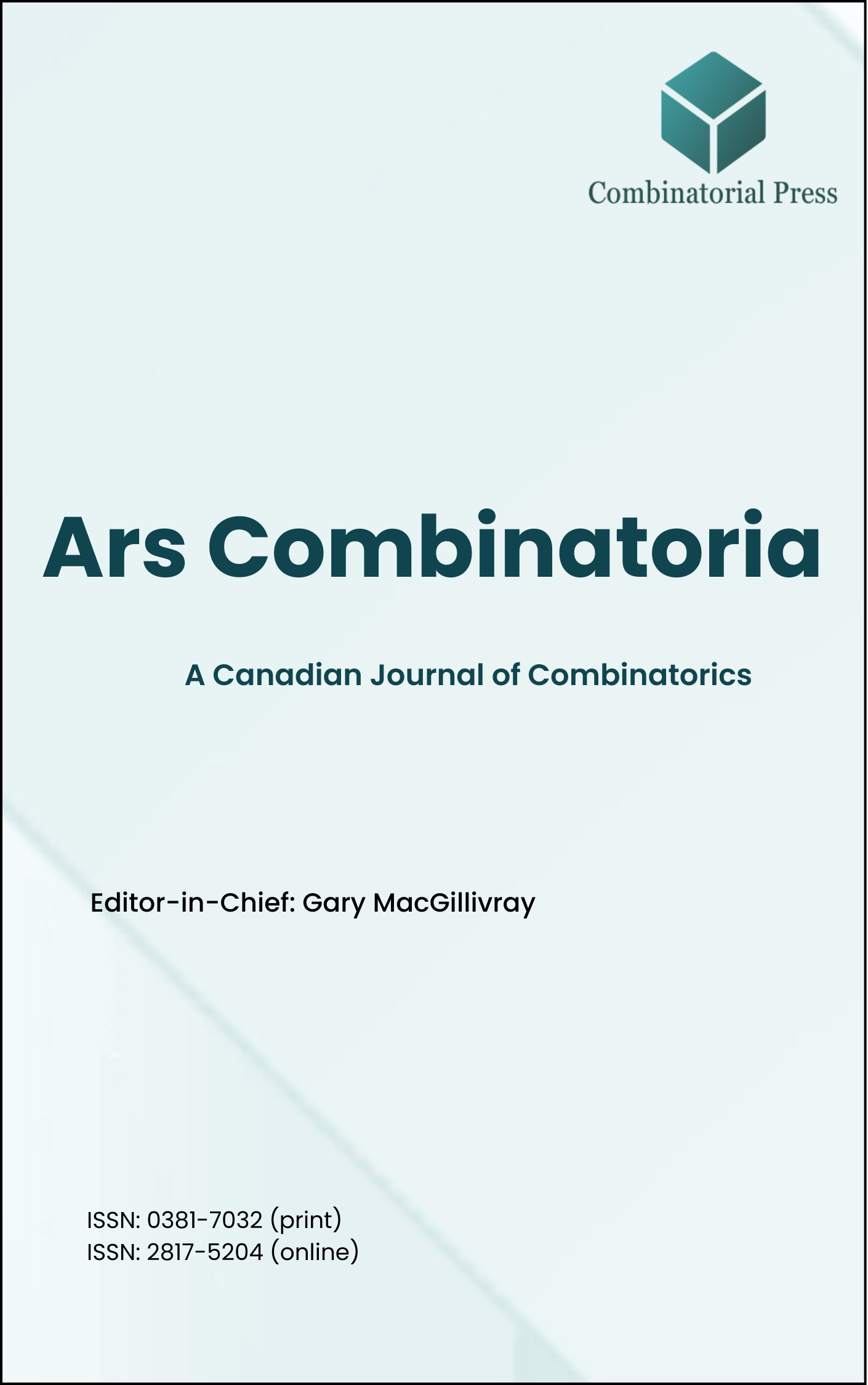
Ars Combinatoria
ISSN 0381-7032 (print), 2817-5204 (online)
Ars Combinatoria is the oldest Canadian Journal of Combinatorics, established in 1976. The journal is dedicated to advancing the field of combinatorial mathematics through the publication of high-quality research papers. From 2024 onward, it publishes four volumes per year in March, June, September and December. Ars Combinatoria has gained recognition and visibility in the academic community and is indexed in renowned databases such as MathSciNet, Zentralblatt, and Scopus. The Scope of the journal includes Graph theory, Design theory, Extremal combinatorics, Enumeration, Algebraic combinatorics, Combinatorial optimization, Ramsey theory, Automorphism groups, Coding theory, Finite geometries, Chemical graph theory but not limited.
Information Menu
- Research article
- https://doi.org/10.61091/ars162-05
- Full Text
- Ars Combinatoria
- Volume 162
- Pages: 51-70
- Published Online: 22/03/2025
An outer independent double Roman dominating function (OIDRDF) of a graph
(i) every vertex
(ii) every vertex
(iii) no two vertices assigned 0 are adjacent.
The weight of an OIDRDF is the sum of its function values over all vertices, and the outer independent double Roman domination number
- Research article
- https://doi.org/10.61091/ars162-04
- Full Text
- Ars Combinatoria
- Volume 162
- Pages: 39-49
- Published Online: 22/03/2025
Let
- Research article
- https://www.doi.org/10.61091/ars162-03
- Full Text
- Ars Combinatoria
- Volume 162
- Pages: 31-38
- Published Online: 22/03/2025
Given a connected graph
- Research article
- https://www.doi.org/10.61091/ars162-02
- Full Text
- Ars Combinatoria
- Volume 162
- Pages: 13-30
- Published Online: 22/03/2025
The degree of an edge
- Research article
- https://doi.org/10.61091/ars162-01
- Full Text
- Ars Combinatoria
- Volume 162
- Pages: 3-12
- Published Online: 22/03/2025
A proper total coloring of a graph
- Research article
- https://doi.org/10.61091/ars161-16
- Full Text
- Ars Combinatoria
- Volume 161
- Pages: 211-230
- Published: 31/12/2024
We study a discrete-time model for the spread of information in a graph, motivated by the idea that people believe a story when they learn of it from two different origins. Similar to the burning number, in this problem, information spreads in rounds and a new source can appear in each round. For a graph
- Research article
- https://doi.org/10.61091/ars161-15
- Full Text
- Ars Combinatoria
- Volume 161
- Pages: 187-209
- Published: 31/12/2024
An hourglass
- Research article
- https://doi.org/10.61091/ars161-14
- Full Text
- Ars Combinatoria
- Volume 161
- Pages: 175-185
- Published: 31/12/2024
Let
- Research article
- https://doi.org/10.61091/ars161-13
- Full Text
- Ars Combinatoria
- Volume 161
- Pages: 159-173
- Published: 31/12/2024
In this paper, it is pointed out that the definition of `Fibonacci
- Research article
- https://doi.org/10.61091/ars161-12
- Full Text
- Ars Combinatoria
- Volume 161
- Pages: 135-157
- Published: 31/12/2024
A





